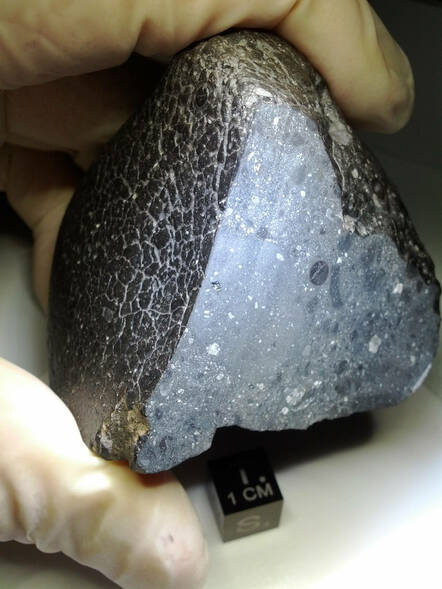When you buy through links on our site , we may earn an affiliate commission . Here ’s how it works .
investigator have trace the oldest know Martian meteorite to its accurate origin point using unreal intelligence ( AI ) , and the findings could aid reveal what conditions on oursolar system ’s planets were like during their very first days .
The 11 - troy ounce ( 320 gm ) meteorite , officially dubbed Northwest Africa 7034 but commonly known as " Black Beauty , " is conceive to have smashed intoEarthroughly 5 million geezerhood ago . After being find in the Sahara Desert in 2011 , its age was dated to just under 4.5 billion years former — making it the oldest Martian meteorite ever found on Earth .

The AI software enabled scientists to pinpoint the rock’s location to a crater on Mars' southern hemisphere.
Scientists consider the meteorite was launched to Earth after a powerful asteroid impact struck Mars , ripping up constituent of the planet ’s crust and sprayed them into space . Now , using a machine - learning algorithm to identify and catalogue 94 million crater on Mars , researchers have traced Black Beauty ’s origin to a small volcanic crater within a volcanic crater in the Martian southerly hemisphere . The scientists refer the crater Karratha after the Australian mining town where many of Earth ’s oldest rocks have been find . They write their findings July 12 in the journalNature Communications .
Related : Giant source of ' secret water ' hear on Mars
" Finding the area where the ' Black Beauty ' meteorite originates is critical because it contains the oldest Martian fragments ever found , age at 4.48 billion year old , and it express similarity between Mars ' very older gall , age about 4.53 billion years honest-to-goodness , and today ’s Earth Continent , " lead - author Anthony Lagain , a planetary scientist at Curtin University in Perth , Australia , tell in a affirmation . " The region we key as being the source of this unique Martian meteorite sample distribution constitutes a dead on target window into the earliest environment of the planets , including the Earth , which our planet lost because ofplate tectonicsand corroding . "

To describe the meteorite ’s starting point , investigator fed images of 94 million Martian craters take by Mars Reconnaissance Orbiter ’s context camera into a automobile - learning algorithm . The AI cross - referenced the size and distribution of the craters with the material properties of the stray meteorite — which has some of the highest concentration of K and thorium of any Martian meteorite found on Earth , and is one of the most magnetized . This narrowed down the listing of potential craters to 19 , one of which stand out to the squad because it intimately matches the chronology of the Martian impact and the meteorite ’s properties .
— wonder rover snap close - up of lilliputian ' mineral blossom ' on Mars
— Scientists represent the secret inside of Mars for the first time ever

— ' False fossils ' littered across Mars may perplex the search for life on Red Planet
By studying the wallop volcanic crater , the scientists found that Black Beauty was sent to Earth thanks to two asteroid impact . The first — which slammed into Mars and formed the 25 - statute mile - encompassing ( 40 kilometers ) Khujirt crater some 1.5 billion years ago — violently ripped Black Beauty and other rocks from the Martian crust , sending them luxuriously into the atmosphere before they rained back down onto the Red Planet ’s surface . Then , after 5 to 10 million years of respite , a 2nd impact sent Black Beauty flying through space towards Earth and left behind the Karratha volcanic crater inside the Khujirt volcanic crater .
The finding advise the stone was once part of Mars ' aboriginal crust — the Red Planet ’s original encrustation that form presently after its magma ocean cooled and solidified . As plate tectonics destroyed Earth ’s primordial crust , and the original crust of themoonis bury under thousands of metre of moon dust , this makes the volcanic crater specially exciting to scientists who want to study how the body of oursolar systemfirst formed .

The algorithm could not only place the ejection sites of other Martian meteorites , the researchers say they also want to adapt their algorithm to execute similar searches across the lunar month andMercury .
" This will avail to unravel their geologic account and answer burning questions that will help oneself next investigations of the Solar System such as the Artemis program to commit humans on the Moon by the goal of the decennary or the BepiColombo mission , in orbit around Mercury in 2025 , " co - author Gretchen Benedix , a wandering scientist at Curtin University order in the statement .
Originally published on Live Science .














